
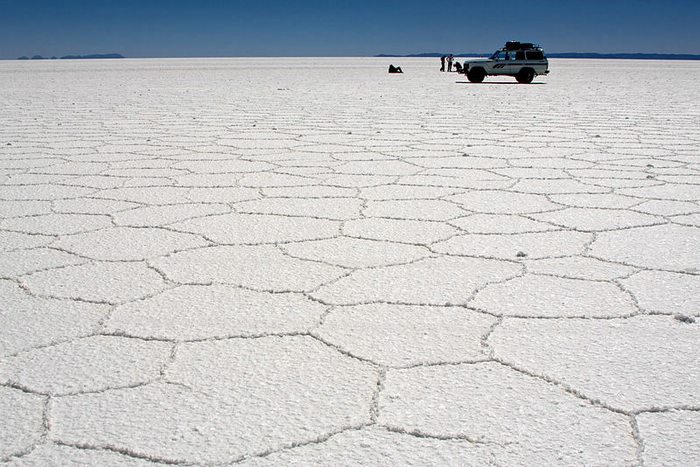 For its magical landscapes, the Uyuni Salt Flat is a top destination for travel to Bolivia.
For its magical landscapes, the Uyuni Salt Flat is a top destination for travel to Bolivia.
On a tour to Uyun in the altiplano of southwestern Bolivia, the natural landscape takes center stage. The highlight is Salar de Uyuni, a salt lake set at 3,700 meters above sea level and covering 4,086 squared miles (10,582 km2), an area roughly the size of Hawaii. NASA satellite images show that the Uyuni Salt Flat is larger than nearby Lake Titicaca, the highest-altitude navigable lake in the world.
The abstract numbers are impressive, but the scale of the place only really hits home when you travel to Uyuni, ride a 4X4 Land Cruiser to the middle of the salt lake, and stand enveloped by a huge white space, completely bare of plant and animal life, that seems to extend into forever. In the far distance, a towering rim of mountains shimmers in the heat of the day, seeming to hover a few millimeters above the horizon. Every astonishing sight reminds you that this is like no other place in the world.
Uyuni is distinguished by its exceptional flatness. Elevation varies by just 1 meter over the entire surface. With clear skies, dry air, and a highly reflective and stable surface, conditions are perfect for scientists seeking to calibrate orbiting satellites.
Walking on the vast white sheet of salt is a wonderful experience. In some places, the salt dries up into ridged patterns of rough hexagons. In other spots, it’s bumpy and textured like freezer frost. The salt crystals are big and solid, rough to the touch, and crunchy under your feet. Though it mimics the look of ice, it lacks the bite of cold against flesh. The salt crust ranges in thickness between 1-10 meters and overlays a deep pool of brine, the remains of a dried prehistoric lake. A collective of local workers mines enormous quantities of salt, approximately 25,000 tons every year. It’s common to see these men at work, creating mounds of mushy salt (for faster drying) and shoveling loads of dried salt onto truck beds. Geologic studies have determined that the salt flat holds between 40 and 70% of the world’s lithium reserves, as well as quantities of gypsum and halite, though the Bolivian government does not currently permit extraction of these minerals.
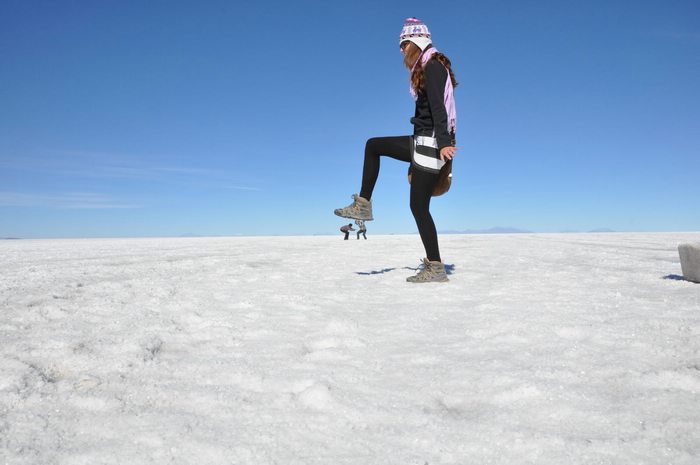 A camera may be the most important piece of travel gear on an Uyuni tour.
A camera may be the most important piece of travel gear on an Uyuni tour.
Do a web search for “Uyuni images” and you’ll see examples of cool photos taken on the Salar. Fun photography has become a hallmark of this top Bolivia tour. The dry season is the best time to play around with perspective. Small objects at the forefront become magnified, while those set a few feet back appear tiny, like something out of the 1989 film Honey, I Shrunk the Kids.
Optical fun takes a different form during the wet season in Uyuni. Rainwater pools on the surface, erasing the horizon and acting like a giant mirror to reflect wisps of clouds and the big blue sky. The doubled images of people, vehicles, and other objects seem to float on nothing.
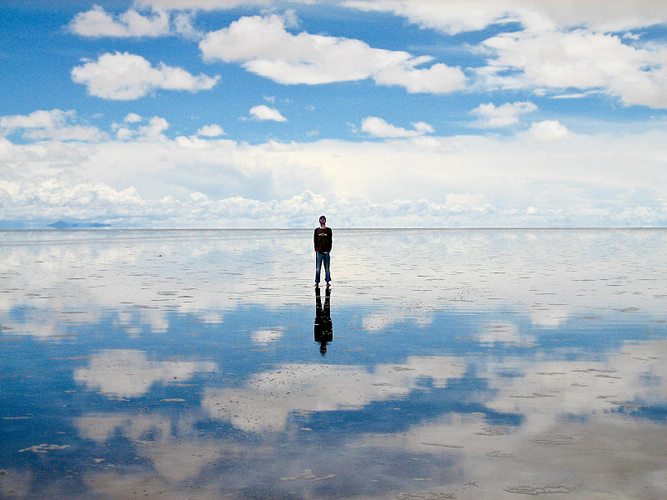 Photographs become the key mementos of a surreal Uyuni tour experience.
Photographs become the key mementos of a surreal Uyuni tour experience.
Many travelers, having taken the trouble to journey out this far, decide to take a 3-day tour beyond Uyuni and into the surrounding highlands. Here, the white salt is replaced by a brown dryness spotted with short shrubs. It’s a land suitable for little except growing quinoa and grazing llamas.
The main attraction is the Eduardo Avaroa Andean Fauna National Reserve, which sits in the southwestern-most corner of Bolivia, bordering Argentina and Chile. A popular tour variation continues on to San Pedro de Atacama in Chile, rather than returning to Uyuni. As if seeking to one-up the Salar de Uyuni, the reserve’s landscape features are stellar. Isolated lagoons with differing concentrations of minerals, algae, and plankton, are colored in shades of white, red, green, and blue. Flocks of pink flamingos add more color. Rock formations interrupt the otherwise empty spaces of wind swept, desolate plains. Active volcanoes, bubbling mud lava pits, and warm hot springs testify to the intense geothermic activity that lies just beneath the surface and that continues to shape the land. The whole is something like Dali’s surrealist paintings brought to life.
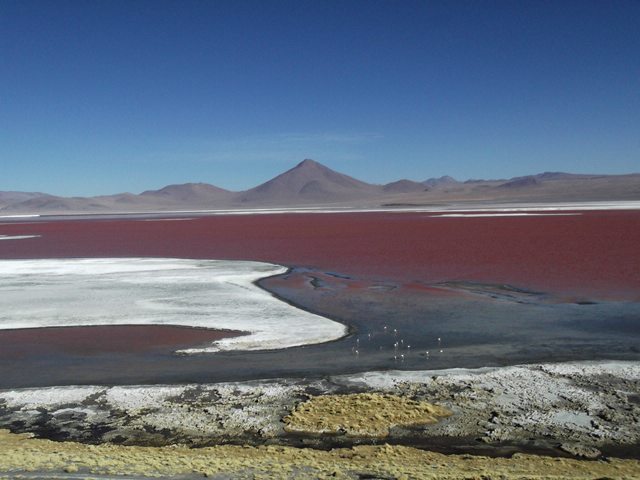 Laguna Colorada in Bolivia derives its colors from algae and plankton.
Laguna Colorada in Bolivia derives its colors from algae and plankton.
Accommodations on an 3-day Uyuni tour are basic. Almost nothing grows on the Salar or the surrounding region, but locals have ingeniously adapted to the complete lack of native building materials by carving out huge salt blocks to construct entire hostels, including the furniture therein. In the evening, temperatures plummet, but out here, in the middle of nothing, the nighttime sky is spectacular.
Latin America For Less specializes in organizing tours to Bolivia and other magical South America vacation destinations. Contact us to start planning your dream vacation.

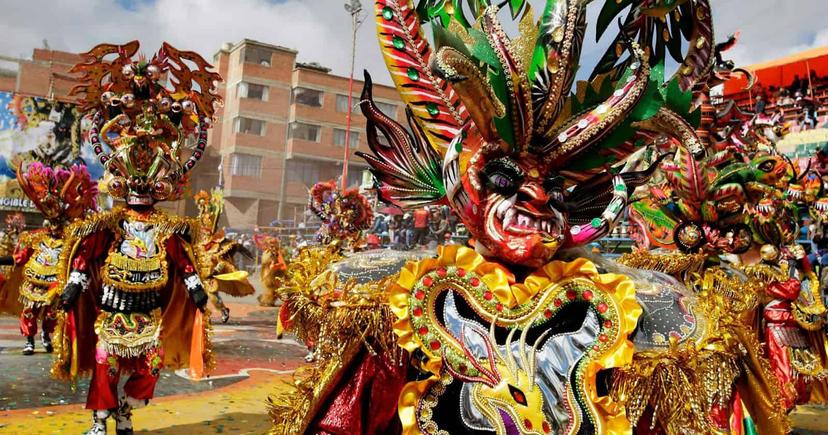

Email: [email protected]
Sign up to receive our newsletter for great articles, stunning photos, and special deals.